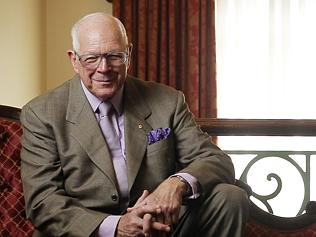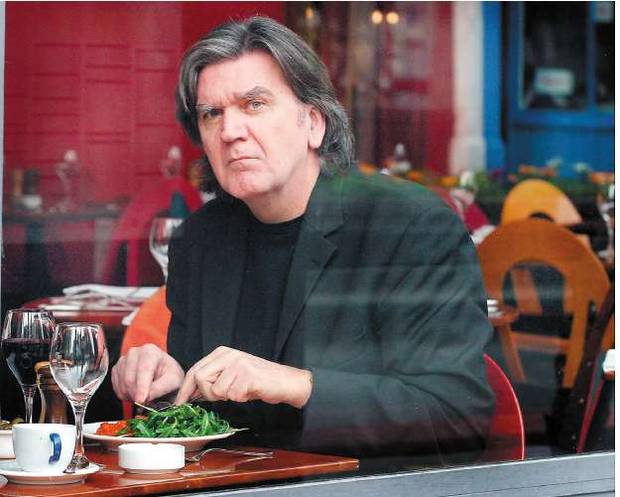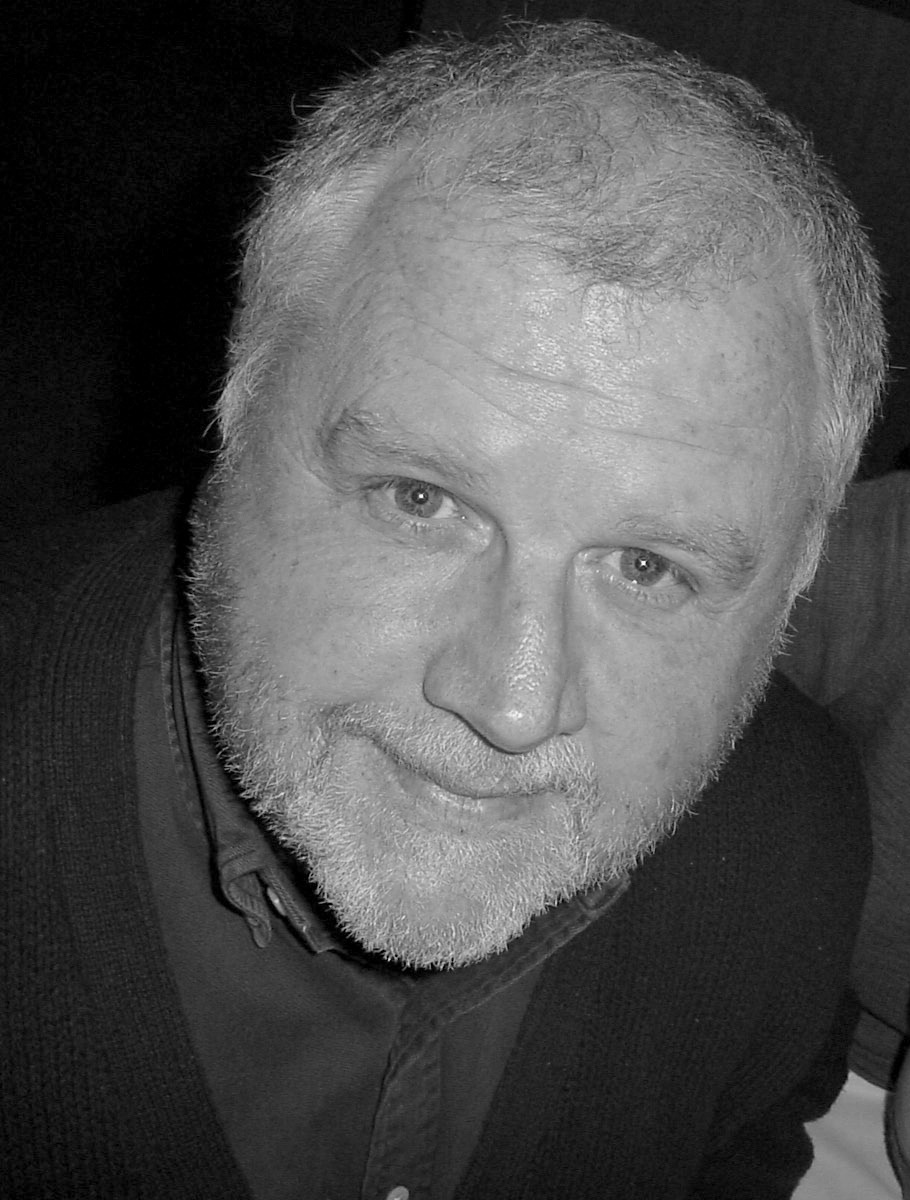Gawen Rudder: Three Hats and a Pride of Lions
 Ad industry veteran Gawen Rudder points out the parallels between the culinary arts and the craft of advertising.
Ad industry veteran Gawen Rudder points out the parallels between the culinary arts and the craft of advertising.
Blame David Ogilvy. At 20 years of age, after failing to graduate at Oxford, he found himself sous chef at the Hotel Majestic in Paris, an experience he later recalled: “I have always believed that if I could understand how Monsieur Pitard, the head chef, inspired such white-hot morale, I could apply the same kind of leadership to the management of my advertising agency … every man jack was inspired by one ambition: to cook better than any chef had ever cooked before.”
The parallels between the culinary arts and the craft of advertising are as intertwined as they are tenuous. Both walk the teetering tightrope of a fickle public and carping critics. Chefs are as good as their last meal – creatives as their last ad. They need awards like a fish needs water. Those three hats, Michelin stars and Cannes Lions are judged by their peers, subjected to intense speculation, bitchy backbiting, anonymous blogs, disputation and dissent.
The structure of an agency is not dissimilar to that of a restaurant; front-of-house waitstaff are like suits, tending to clients and shielding them from the hothouse of the creative department. Chefs and creatives live on the edge, pushing boundaries in search of the new. Molecular gastronomy and digital technology are fast replacing traditional craft skills.
Is it, one wonders, a coincidence that MasterChef and The Gruen Transfer launched within a year of one another and found success? Each creating household names, even celebrities, out of their respective front men.
The link between advertising and food emerged in 1952 with the publication of ‘Oh, for a French Wife!’ co-authored by Ted Moloney of J. Walter Thompson and co-creator of the Chesty Bond character, back in the late 30s.
 This food writer/copywriter connection was continued by reviewer emeritus Leo Schofield (left), who spent 25 years in creative at Leo Burnett and later opened his own successful agency, Schofield Sherbon Baker. Schofield could close a restaurant with his biting copy. Imagine opening The Sydney Morning Herald to read that your menu was, “as exciting as a frontal lobotomy.” When he accused an East Sydney restaurant of a “culinary crime” for transmogrifying their lobster into an “albino walrus,” it became time to move on and pass the baton to Terry Durack.
This food writer/copywriter connection was continued by reviewer emeritus Leo Schofield (left), who spent 25 years in creative at Leo Burnett and later opened his own successful agency, Schofield Sherbon Baker. Schofield could close a restaurant with his biting copy. Imagine opening The Sydney Morning Herald to read that your menu was, “as exciting as a frontal lobotomy.” When he accused an East Sydney restaurant of a “culinary crime” for transmogrifying their lobster into an “albino walrus,” it became time to move on and pass the baton to Terry Durack.
Durack was a Melbourne-based copywriter who made a name for himself with his Target ads at The Campaign Palace. Perhaps these advertising men and women realised the most interesting part of the day was spent over lunch.
 There is another reason why so many copywriters have gone on to excel in other word-smithing jobs where their craft, clever turn of phrase and florid prose are appreciated. Released from the tight client brief and the strictures of the Advertising Standards Board, they are freed, save for the fear of legal retribution. Durack (left) may have sailed close to the wind with this Sydney Morning Herald piece on Jamie’s Italian: “The kitchen sounds like a male labour ward. ‘Come on, guys, push, push!'” A little different from the UK where libel laws are a little less stringent (and food critic’s lines such as, “dog’s breakfast and baby sick” and “like chewing a trampoline” cause barely a ripple.) The principle however, remains. The writer must make people want to read what they write, knowing that nobody really wants to read ads.
There is another reason why so many copywriters have gone on to excel in other word-smithing jobs where their craft, clever turn of phrase and florid prose are appreciated. Released from the tight client brief and the strictures of the Advertising Standards Board, they are freed, save for the fear of legal retribution. Durack (left) may have sailed close to the wind with this Sydney Morning Herald piece on Jamie’s Italian: “The kitchen sounds like a male labour ward. ‘Come on, guys, push, push!'” A little different from the UK where libel laws are a little less stringent (and food critic’s lines such as, “dog’s breakfast and baby sick” and “like chewing a trampoline” cause barely a ripple.) The principle however, remains. The writer must make people want to read what they write, knowing that nobody really wants to read ads.
Keating killed lunch. The Fringe Benefits Tax, introduced on July 1, 1986, became the death of the 10 per cent lubrication/degustation and 90 per cent inspiration lunch. Now a revered food writer and teacher, John Newton (another copywriter from Leo Burnett) was a self-described “poet of commerce.” As he explained, “take the problem and your client to lunch. Consider the prospect of a clean white cloth, shiny cutlery, hovering waiters, a wise sommelier and a genius in the kitchen who has produced a menu laden with choices that are, for the first time in the day, pleasant and exciting.”
 There is a seemingly endless list of advertising tooth-men and women. In alpha order:
There is a seemingly endless list of advertising tooth-men and women. In alpha order:
Grant Booker (left) of Grown-Ups ran his eponymous restaurant Booker’s at Five Ways in Paddington for a bit.
One time editor of AdNews Ed Charles is a food writer at Tomato Media. Rowie Dillon cut her teeth at Mojo/MDA Sydney as Ted Horton’s PA and successfully launched Rowie’s Cakes – her yummy gluten-free range is available on-board Qantas and at Woolies.
During her six years in adland, Jill Dupleix met fellow copywriter Terry to become the consummate culinary couple.
 Ted Horton (left) famously started his advertising career tending table to the Palace creatives at Mario’s in St Kilda.
Ted Horton (left) famously started his advertising career tending table to the Palace creatives at Mario’s in St Kilda.
One wonders whether Russel Howcroft’s foodie/marketing role on Ten’s Recipe to Riches (taking over the role vacated by fellow adman, Droga5’s David ‘Nobby’ Nobay), qualifies either as a foodie.
Food blogger (Last Appetite) Phil Lees, was social media manager for Remote Control Tourist, winner of five Bronze Lions and AWARD Awards.
Les Luxford – food judge and legendary TVC director, claims (and it’s probably true) to have dined at every Michelin five-star restaurant in Paris.
The brother of Leo Premutico (Johannes Leonardo, New York) Stevan, worked in advertising and marketing before launching his successful restaurant reservation/review website, Dimmi.
Fisher and oysterman Phil Putnam is former chair of the AWARD Awards and creative at Y&R and Saatchi’s.
MDA chairman, Malcolm Spry, oversaw the very eighties and vogueish Chez Oz at the Cross.
Kim Terakes – a 25-year veteran of DDB, The Palace and Omon – combines cookbook writing and a food, wine and PR consultancy.
Respected food writer Simon Thomsen, former Good Food Guide writer and Sydney Morning Herald critic (dumped when the now-UK-credentialed Durack returned to Sydney in 2009) started out as a copywriter.
So what is it that binds food and advertising? Check out the elaborate prose on that fine dining menu and, chances are, it’s been written by a starving creative bartering for a free feed. Conversely, many a great ad has been created on the back of a pasta-stained napkin. Lionel Hunt is on record as saying that the recipe for a successful campaign is simple: “a long lunch with an art director.”
The Mad Men lot were libidinous and lovers of the liquid lunch. Don Draper was, as Roger Sterling put it, “a fan of the mollusk,” and favoured the Oyster Bar & Restaurant downstairs at Grand Central Station. Regular viewers might recall the spot where the two shared a few too many lunchtime cocktails, causing Roger to lose his oysters at the feet of Richard Nixon’s campaign staffers back at the office.
The ‘three martini lunch’ was legendary, as evidenced in this ex-change between Graham Kennedy and Channel Nine’s big kahuna Frank Packer. “It would be 11 o’clock and he’d say, “have a martini.” I’d say, “oh thank you Sir Frank, but no, it’s a bit early.” And Packer would snap, “have a fucking martini, it’s a fucking order.” And I’d say, “oh yes, thank you, a double.”
We’ll allow Mr Ogilvy the last word. He relates the story of an impromptu visit from the President of France for a banquet hosted at the Majestic in 1931. A lively electricity filled the air as chefs and servers alike scrambled in the hope of leaving a lasting impression on this exalted guest. Responsible for the frogs’ legs covered in a white chaud-froid sauce, Ogilvy described the tension he felt: “Suddenly I became aware that M. Pitard was standing beside me, watching. I was so frightened that my knees knocked together and my hands trembled. He took the pencil from his starc
hed toque and waved it in the air, his signal for the whole brigade to gather. Then he pointed at my frogs’ legs and said, very slowly and quietly, ‘That’s how to do it.’ I was his slave for life.”

2 Comments
Delicious, as usual Gawen.
Thanks for the mention Gawen. It’s full circle and now transformed back to being a digital adman from food writer.